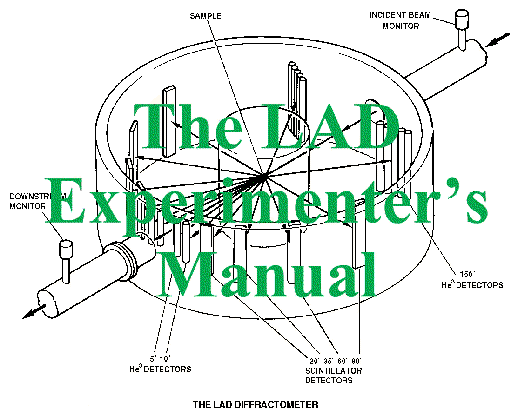
| 4.6 Beam Log - Monitoring Moderator Performance |
![]()
The liquid methane moderator is normally maintained at a temperature of 110K. However, there is a process whereby the moderator slowly blocks and its performance can suffer as a result. Radiation ionises the CH4 molecules which recombine to form a hydrogenated carbonaceous deposit which slowly builds up and eventually blocks the moderator. This blockage can result in the moderator temperature rising or the amount of liquid methane in the moderator falling. When this happens the flux shape for the neutrons coming from the moderator changes. The LAD data analysis software normalises the data to the flux shape measured by the incident beam monitor in order to minimise the effect of any change in the moderator flux shape. However, experience suggests that when the height of the Maxwellian peak changes by more than 10% then inconsistent results may be obtained.
The moderator veto (described in section 4.3.1) is useful in minimising moderator problems, but nevertheless it is worthwhile for the user to monitor the performance of the moderator.
Normally a beam logger program which monitors the behaviour of the moderator is running on the LAD instrument computer. (You can check the presence of the program by typing SH SYS on the LAD computer - if the program is running there will be a process called AlexMon.) Once a minute the beam logger records the number of neutrons counted in the Maxwellian peak region by the incident beam monitor and also the accumulated proton beam in micro-Amp-hours. The beam log may be viewed from GENIE by use of the commands BEAM, NPOLD and NPNEW (see Table 6). The software is normally set to scale the neutron/proton ratio so that it has a value of one if the moderator is performing satisfactorily.
![]()
![]()
Last Updated 09 Nov 1998